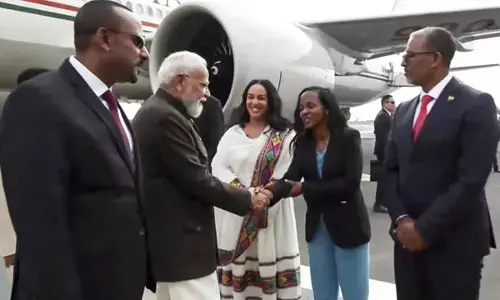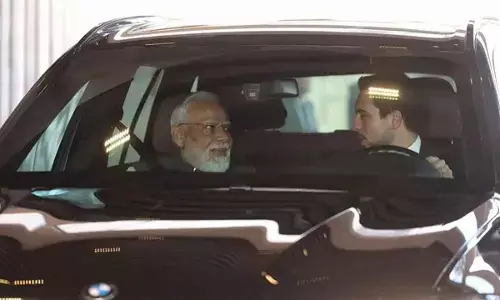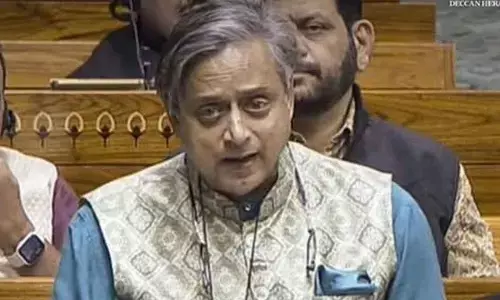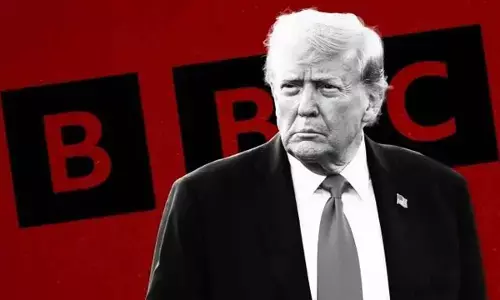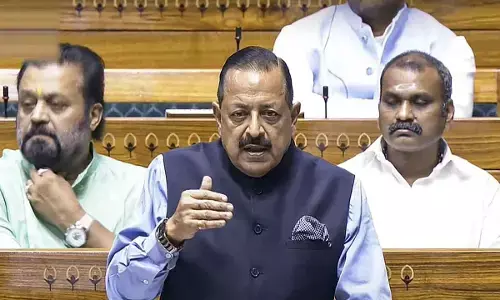Vulnerable groups among tribals in dire straits

The proposed inclusion of two castes Valmiki Boya and Khaiti Lambada in the list of existing Scheduled Tribes in Telangana as part of fulfilling a poll promise of Telangana Rashtra Samiti (TRS) is like falling out of the frying pan into the fire for several underprivileged tribal groups.
 The Government of Telangana has appointed Chellappa Commission of Inquiry to study relative increase of Scheduled Tribe population in Telangana State and examine the representation of Valmiki Boya and Khaiti Lambada castes to be included in the list of STs in the newly carved out State. This has caused heart-burn among the marginalised groups like Gonds and Koyas
The Government of Telangana has appointed Chellappa Commission of Inquiry to study relative increase of Scheduled Tribe population in Telangana State and examine the representation of Valmiki Boya and Khaiti Lambada castes to be included in the list of STs in the newly carved out State. This has caused heart-burn among the marginalised groups like Gonds and Koyas
The proposed inclusion of two castes Valmiki Boya and Khaiti Lambada in the list of existing Scheduled Tribes in Telangana as part of fulfilling a poll promise of Telangana Rashtra Samiti (TRS) is like falling out of the frying pan into the fire for several underprivileged tribal groups.
The Government of Telangana appointed Chellappa Commission of Inquiry to study relative increase of Scheduled Tribe population in Telangana State and examine the representation of Valmiki Boya and Khaiti Lambada castes to be included in the list of STs in the newly carved out Telangana State.
There has already been a great protest in the State that Gonds, Koyas, Kolams, Thotis and Chenchus etc are deprived of their development needs and marginalised due to inclusion of Lambada caste to the list of STs in 1976. The ST population in the State doubled during 1971-81 due to inclusion of Lambadas or Banajaras in 1976.
Further move of the TRS government to include some more non-tribal castes in the notified list of STs is becoming a cause for great concern and unrest among the tribals. During my recent visit to Utnoor in Adilabad district, and Warangal, the Gond and Koya leaders expressed their concern about the existing inequalities among the notified tribal groups and anomalies in listing the STs.
The State of Telangana is already witnessing equalities among the members of STs and how legal wrangles and political factors could interplay in blocking the progress of under developed and developing tribal communities in Telangana State. The notification declaring the Lambada as ST was based on wholly extraneous considerations and actuated by political motives to gain electoral advantages.
In the words of C V Haimendorf, a pioneer anthropologist during the Nizame rule: “The reason for inclusion of Lambadas in the list of ST in 1976 on the part of the government was basically political, for Banjara leaders had been pressing for some time for their inclusion in the list of scheduled tribes, and as some 6,00,000 votes were at stake, the political party in power finally yielded to this pressure.” Congress was responsible for the inclusion of Lambada community and now the fear for the backward tribal groups is that same phenomenon will be repeated by the ruling TRS government.
As per the statistical data of ITDA, Utnoor, Adilabad district Gonds who constituted 52.15 per cent of the total ST population secured only 18.70% of total Economic Support Schemes (ESS) Units, while Lambadas who constitute 22.45 per cent of total population could bag 26.29% of total ESS units during the period 2008-2011.
In fact, the tribal communities are not homogenous with regard to their socio, economic levels. In democratic politics, the numerical strength of the tribal group and also its relative advancement in development help to access or monopolise the benefits over the other notified STs. Particularly, tribal groups like Sugali and Yerukulas are getting a lion share in the posts of government sector. For example, both these plain area tribal groups bagged 86.37 per cent of government posts during the year 2003.
The Government of Andhra Pradesh extended educational benefit to 8,461 tribal students during the year 2003-2006. Sugalis and Yerukula tribals secured benefit of 86.99 per cent of the total educational benefit. The particularly vulnerable tribal groups like Thoti, Chenchus, Kolam, Kondareddy etc and other tribals could secure the benefit of 2.95 per cent only.
To correct injustice, the Tribal Welfare Department of Andhra Pradesh issued a notification in 2006, giving preference in admissions to the most backward tribal community candidates in educational institutions. The High Court of Andhra Pradesh nullified the notification in 2006 on a writ petition filed by Sugali Welfare Association, holding that the government cannot give separate status to tribal groups, contrary to the notified ST list under Article 342(2) of the Constitution of India.
The conclusive view of the Supreme Court in E V Chinnayya Vs State of Andhra Pradesh in 2004 was that the communities included in the Presidential list form a class by themselves and any division of these persons for any consideration would amount to tinkering with the Presidential list. Thus regrouping and reclassification of notified Scheduled Tribes is outside of the scope of interference by the State.
What is the option?
The Lokur Committee of Government of India in 1965 on the revision of lists of SCs and STs held that “it is imperative that the more advanced communities in the lists are gradually descheduled.” The recommendation further reinforces in the draft National Tribal Policy 2006 which prescribes “a process of descheduling” would also be put in place to exclude those communities who have by and large caught up with the general population.
The revised procedure laid down by the Government of India for either inclusion in or exclusion from the list of notified STs in 2002 suggests that after agreeing to the proposal for inclusion or exclusion of the community by the State government, it should also be accepted by the Registrar General of India, and the National Commission for ST.
Then only the agreed proposal will be processed for the decision of Central Cabinet there after matter will be put before the Parliament for passing of bill. Thus the descheduling the developed tribals is only the option to end the inequalities among the tribal groups. (The author is a lawyer and a tribal rights activist)
By Dr Palla Trinadha Rao








